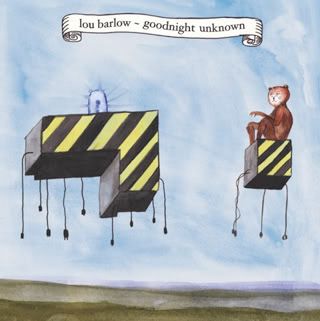
Mission of Burma was founded during a truly tumultuous time in music. The no wave scene in New York had peetered out due to vacillating line-ups and few recordings. Howard DeVoto strayed from the Buzzcocks, and the Sex Pistols had already met their abrupt demise. The foreign, energizing breed of music, later to be coined “post-punk,” had yet to catch on, spare a few bands in faraway lands. But while Joy Division and The Pop Group were making noise across the pond, Burma was concocting their own sound in Boston.
During their initial run, Mission of Burma released only two proper works: Signals, Calls, and Marches (1981) and Vs. (1982). Both proved to be extremely influential, and furthermore encouraged the growing post-punk movement in the States. In deep contrast to their musical colleagues, the members of Burma created music that was teeming with a crude, refreshing stamina; it was nothing short of a working man's grounded version of a genre that was otherwise considered darker, existential, and more Dadaist in nature. Because of the band's short life and the quality of the material, its legacy grew and the music never faded into total obscurity. But The Sound, The Speed, The Light (the band's third album since reuniting in 2002 after a nineteen year hiatus) indicates one somewhat disheartening fact: Burma's sound hasn't lessened in quality or edge, but has become less surprising and lacks even the slightest bit of experimentation.
A lot of blood, sweat, and tears from three very dedicated men were poured into the creation of this album, and that's blatantly obvious, judging from the content's intensity. The tracks are well-produced, rich with potent guitar signatures, and lavish with awesome lyrics. But the visionary appeal the band once brought to the music world has considerably vanished. The Sound's instrumentals are mostly predictable, lacking any element of surprise or idiosyncratic wisdom. “1, 2, 3, Partyy!,” is humorous, but it is sadly one of the most conventional ways to start off an album – a component not expected from Burma. “Possession,” a track with a more catchy, enticing rhythm that is not only a choice song, but should also replace the opening track. Other notable numbers include “Forget Yourself,” a brief calm in the middle of Burma's sea of fury, and “SSL 83,” during which guitarist Roger Miller ostensibly summons the strumming sounds of A Certain Ratio's Martin Moscrop. “So Fuck It” is another golden track because of its callousness, and “Slow Faucet” prevails as an appropriate conclusion. However, the album as a whole becomes foreseeable and uniform, therefore rendering it monotonous despite its enthusiasm and ethic.
This is not to say that Mission of Burma has dug themselves into a rut they cannot possibly get out of. The music certainly pleases at first listen, and this is in no way a horrible album from a mediocre bunch of washed up hooligans. However, the guys have produced better work, and as fans anticipate another release, they can only hope that it lives up to 2006's The Obliterati, or even better, their most influential recordings from the scene they so effortlessly helped cultivate.



